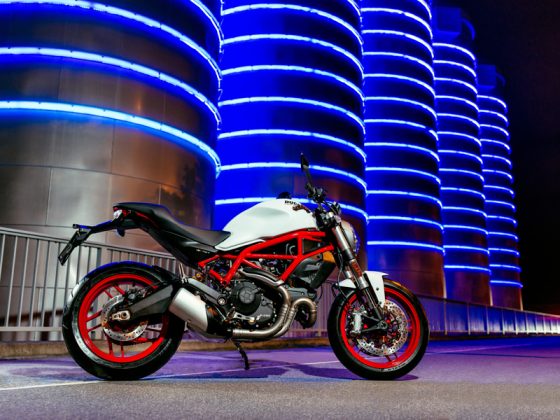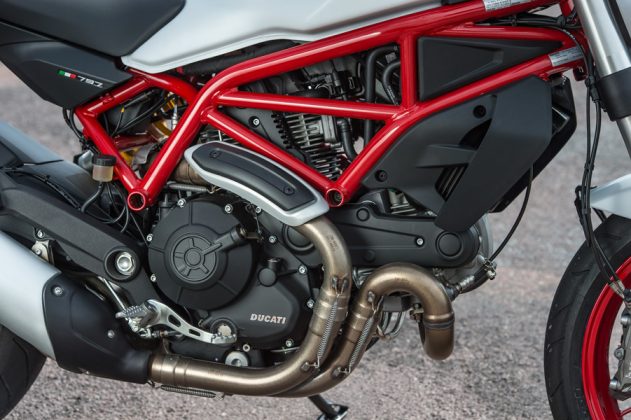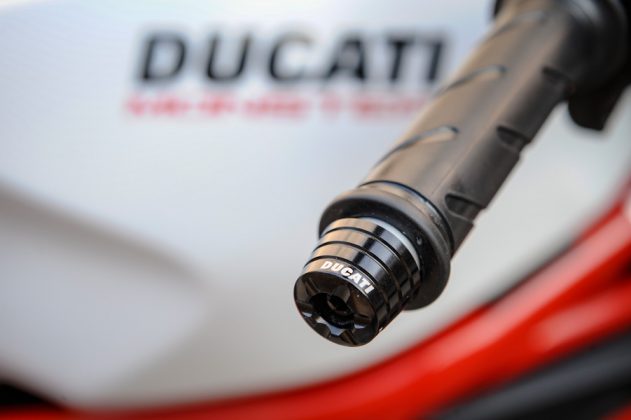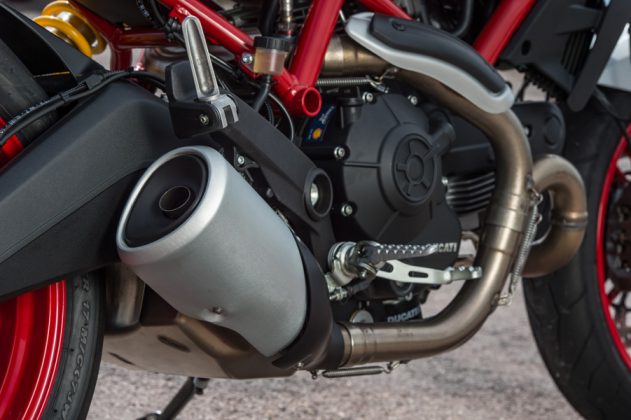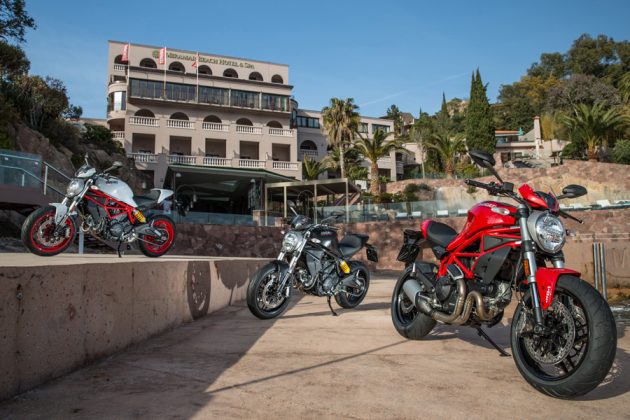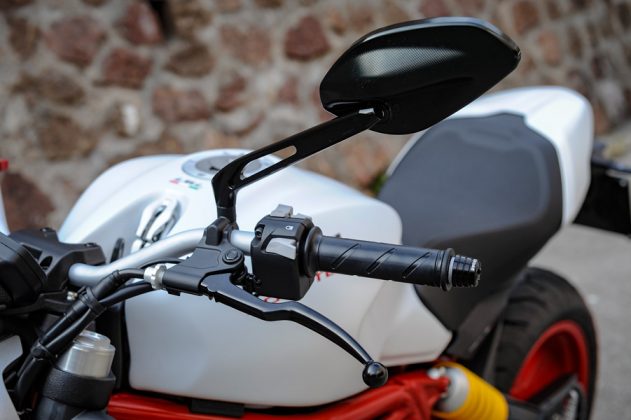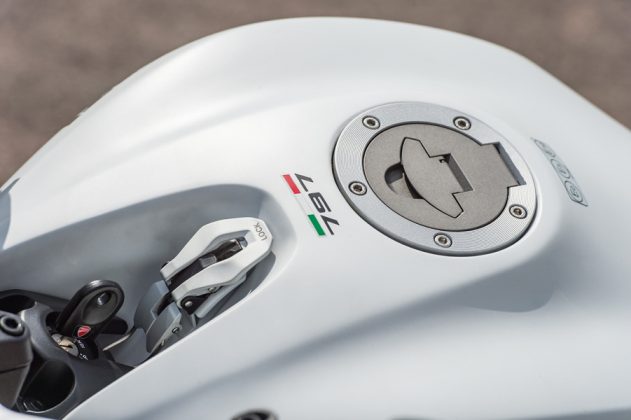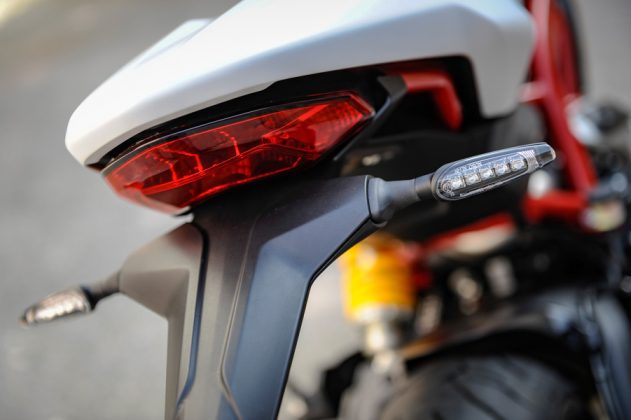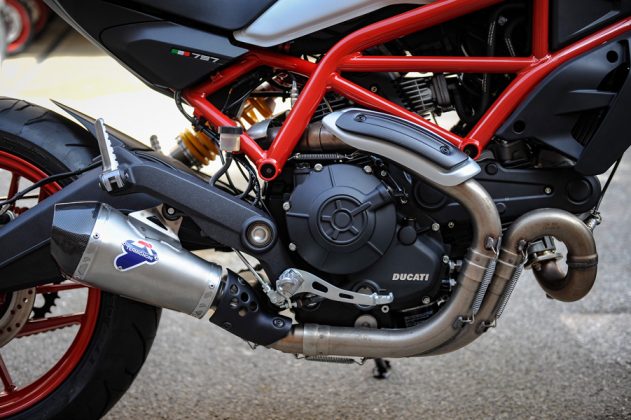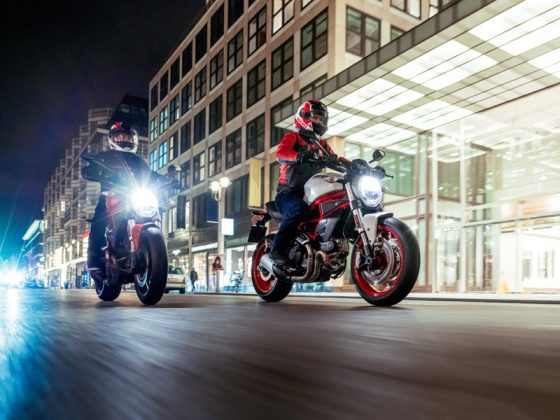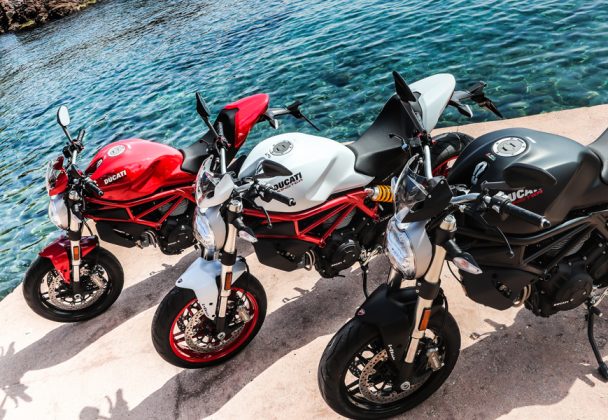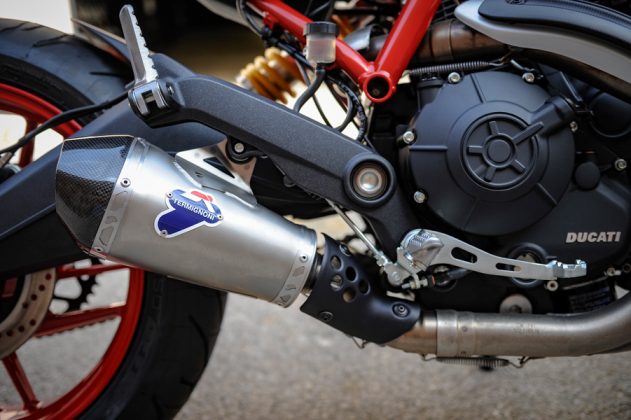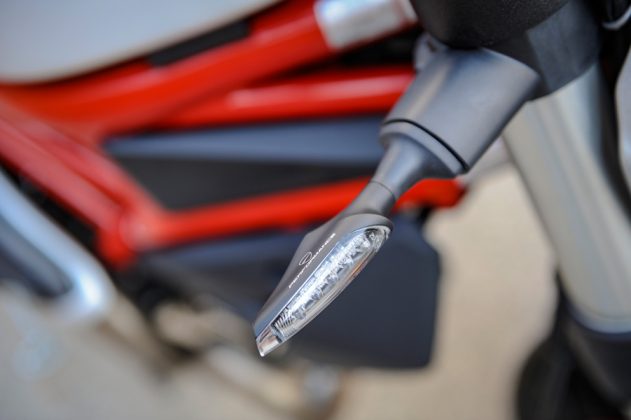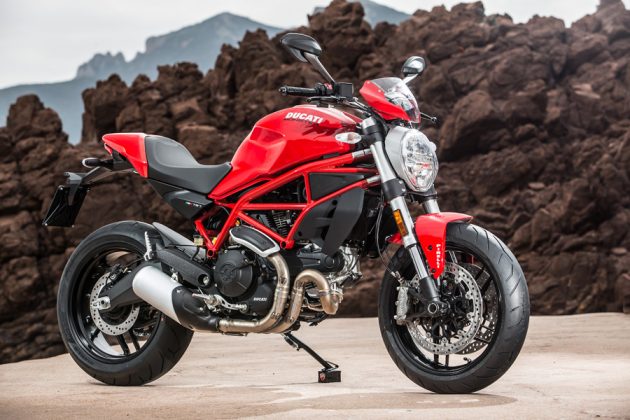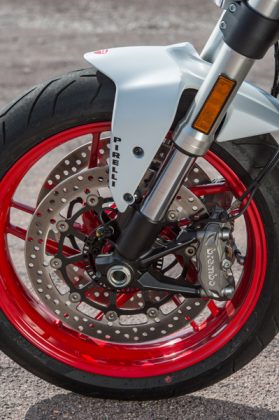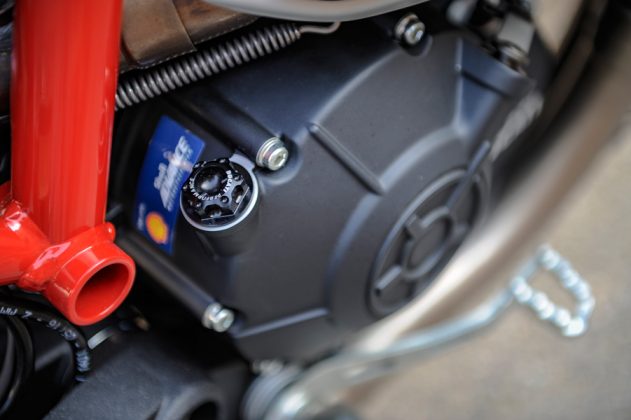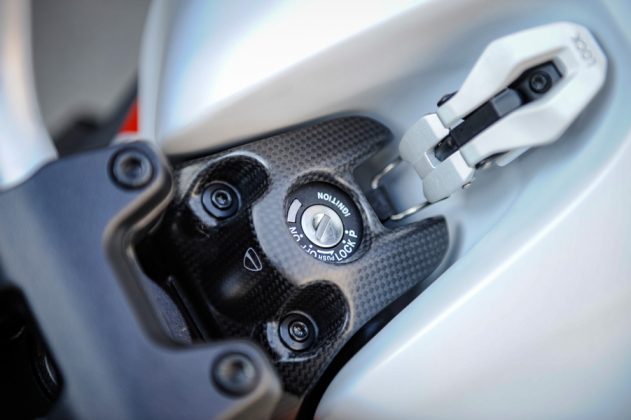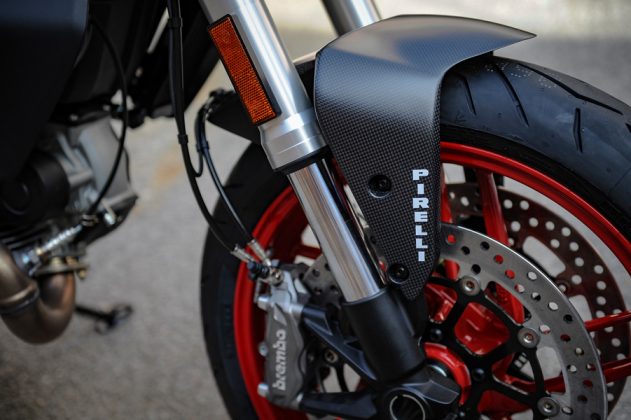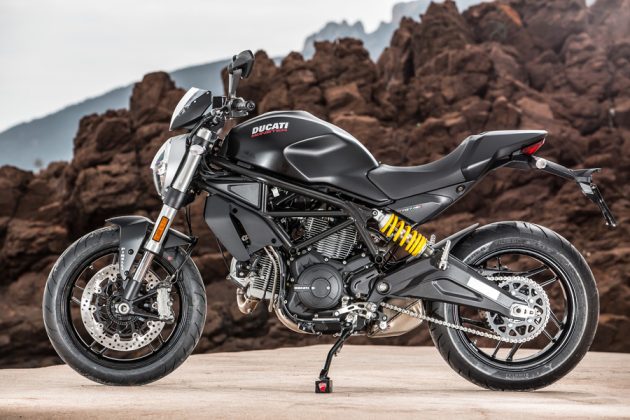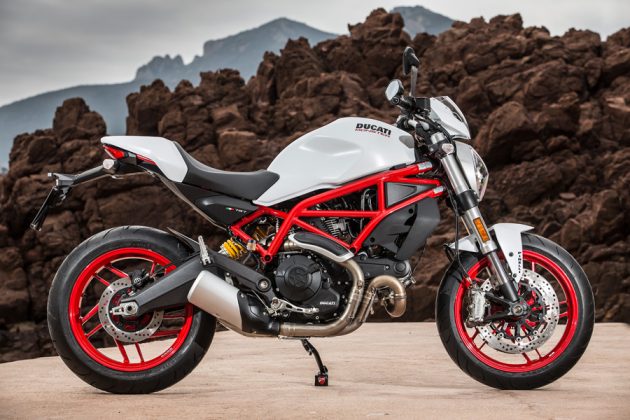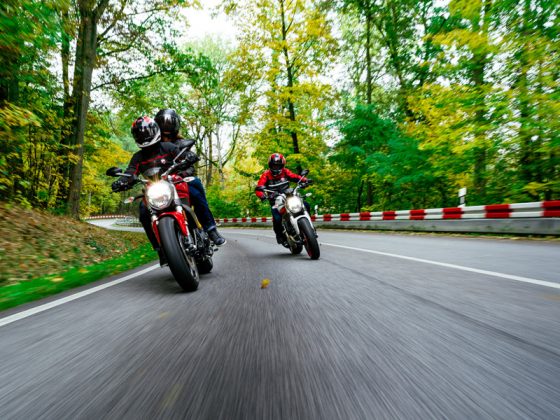Ducati’s Monster has been with us for 25 years and in that time, it would be fair to say, it has become a defining Ducati model. With around 315,000 units sold, it could also be said that it has been the saviour of the company many times. The superbike models might gain all the headlines but, as so often is the case, it is the bread-and-butter models that, well, bring in the bread and butter and keep things afloat.
Back in 1993, the M900 broke new ground for Ducati and, in 1994, the M600 opened up Ducati ownership for a whole new group of riders. The ‘baby’ Monster developed alongside its bigger brother over the years into the 620, 695, 696 and 796 Monsters and that brings us neatly to the new model, the 797.
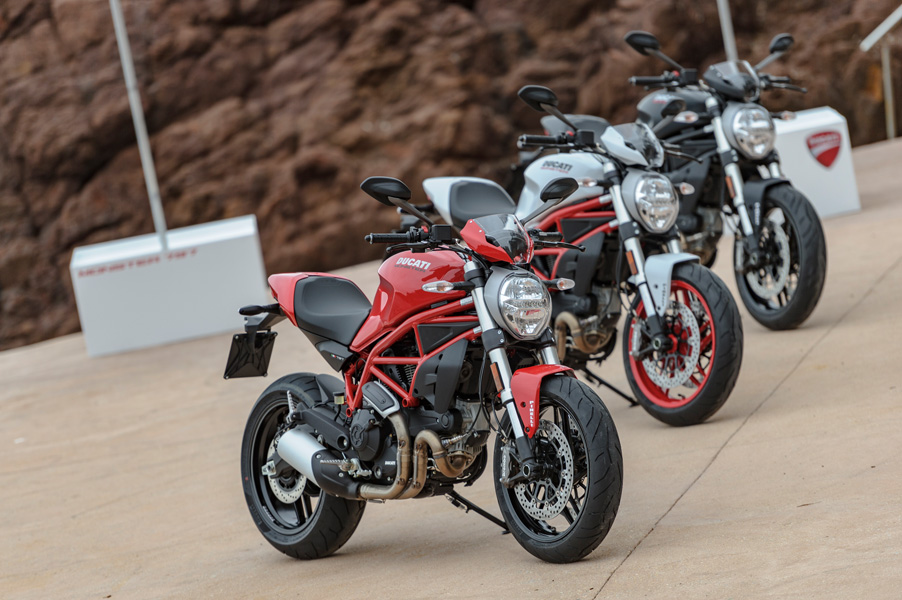
On the surface, elements of this bike might seem like a bit of a retrograde step for Ducati. In the 797 there is an air-cooled motor – the same engine you will find in the Scrambler – and it would be easy to look at this as a retro bike dressed up in modern clothes. But Ducati is at pains to stress that this is a thoroughly modern bike. It’s still a real Ducati, which means it’s a premium product but it’s an entry-level model making it more accessible to existing and new Ducatisti the world over. It’s just that Ducati have chosen to make its entry-level Monster as simple as possible to keep costs – both buying and running – as low as possible.
The whole ethos behind the ‘baby’ Monster is – and always has been – accessibility and the same is true for the 797. They have done this by making it as uncomplicated as possible; only what has been deemed necessary has been added to the bike. So don’t expect a whole suite of electronics, because they just aren’t there. No ride-by-wire throttle and therefore no traction control or rider modes and there isn’t even a gear-position indicator on the digital display.
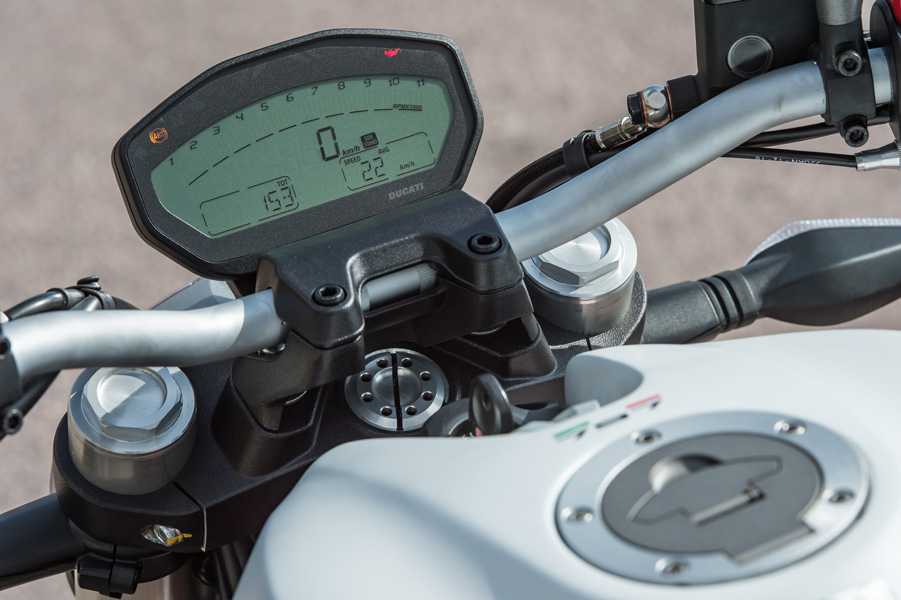
At its heart is the Desmodue, 2-valve, air-cooled, 803cc engine. There’s 75bhp and 68.9Nm of torque which provides easy, unintimidating performance. It’s not slow by any means and has a good spread of torque right through the rev range. We didn’t have chance to ride on a highway so have no way of knowing if the motor could get a little breathless at higher sustained speeds.
There’s a light clutch action with a servo-assisted slipper action that prevents rear-wheel lock-up on down-changes when pushing along and relying on engine braking. Standard tyres are Pirelli Diablo Rosso ll and the suspension – Sachs monoshock at the rear and Kayaba upside-down forks at the front – while not being particularly sophisticated is completely adequate for the available performance.
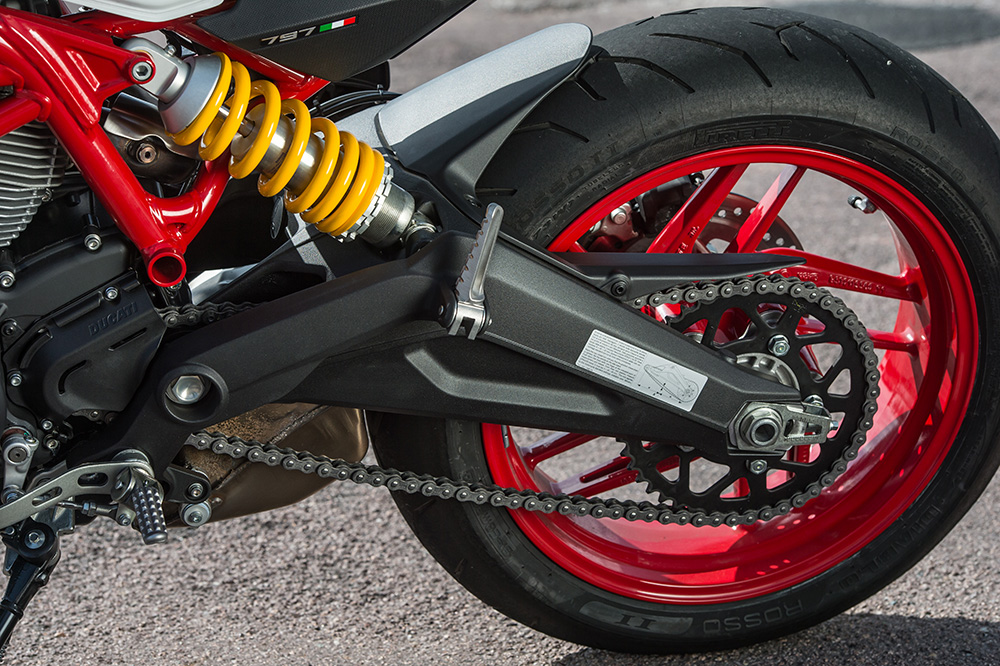
Braking is handled by twin discs clamped by radially mounted Brembo monobloc callipers fitted with ABS as standard.
With the standard silencer it sounds a little strangled but there is a choice of two after-market Termignoni silencers which should allow the Ducati rumble to be unleashed. And, let’s face it; it is the sound that makes a Ducati a Ducati as much as anything.
There are design links to Monsters past and present. The fuel tank and headlight are as found on the Monster 1200 and the swing arm design is taken directly from the old Monster 696. It’s as if the 797 Monster is a celebration of everything that is Monster.
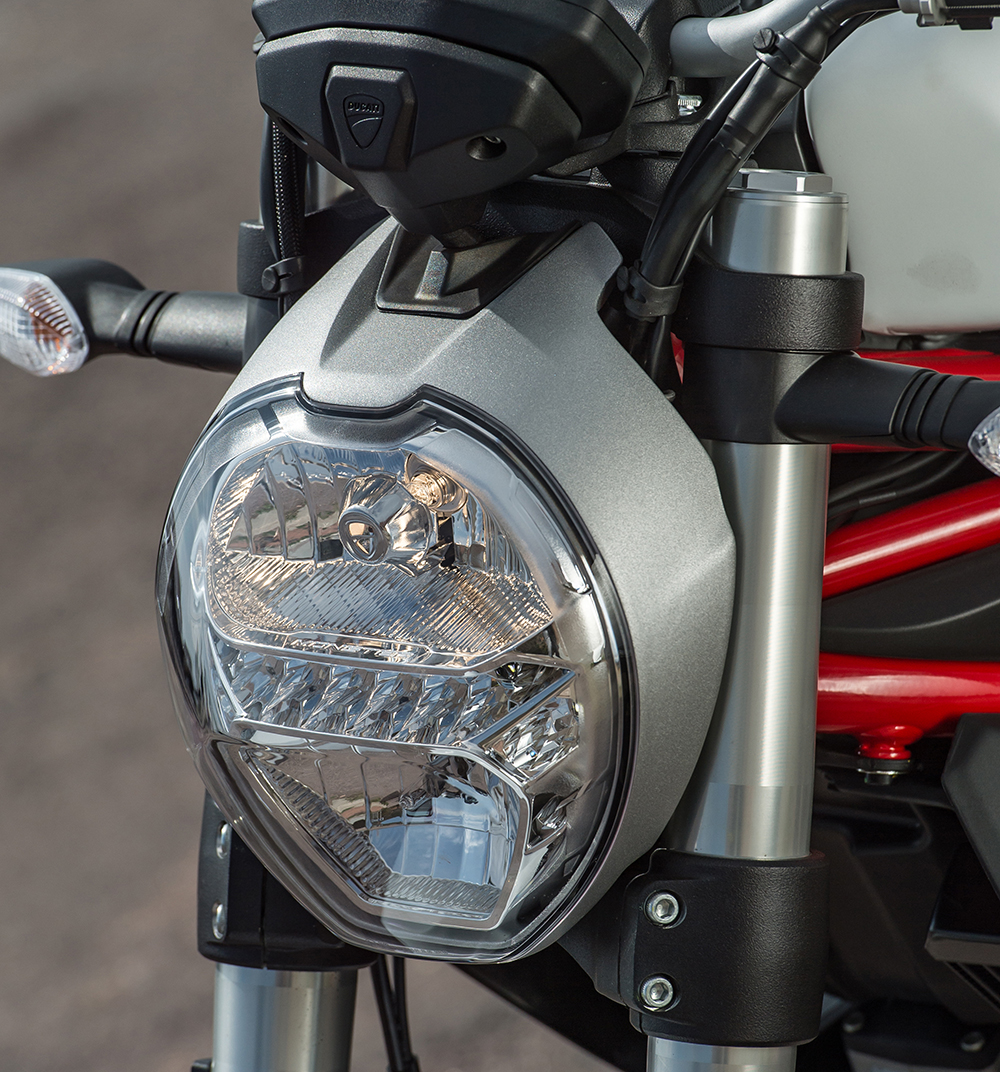
In every way, Ducati have tried to make this bike an easier ride; it really is aimed at new riders. There is a more relaxed riding position compared to the Monster 821 and comfort was obviously high on the agenda when thinking about seat height, reach to the bars and foot peg positioning.
Any chance to ride a bike on the Cote D’Azur in the South of France is not to be passed up, although when it is bucketing down with rain one does start to wonder if it is all worth it. In an ideal world, launches are held in perfect weather conditions so we can ride to our hearts content on the wonderful roads of Europe, getting a feel of the harmony between chassis, engine, steering and braking. Not so this time. With the sensation of water seeping into ones underwear, we steered a cautious path between trying to ascertain what the bike can do and bringing it home in one piece.
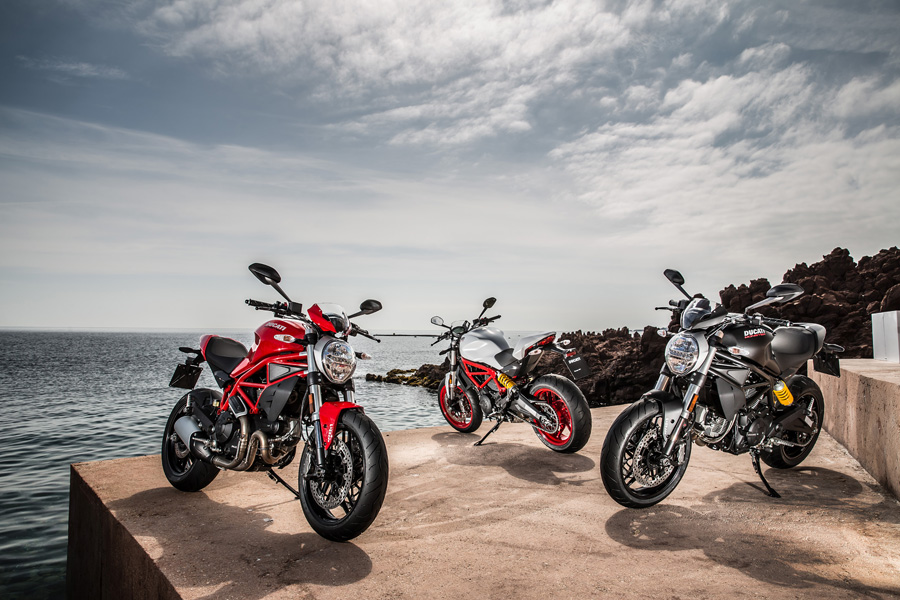
What is clear is that the 797 is very comfortable and has a relaxed riding position (compared to the 821 or 1200 Monsters which, while not being superbike extreme, are a little more aggressive in their treatment of the rider). The fuelling is smooth and gave no moments of panic on the very slippery roads and, while the lack of traction control might seem careless in this day and age, safety simply comes down to judicious use of the throttle, even with a relatively low power output. This omission might seem at odds with the projected target audience of new or inexperienced riders but Ducati insiders claim that they found no demand for it at this level.
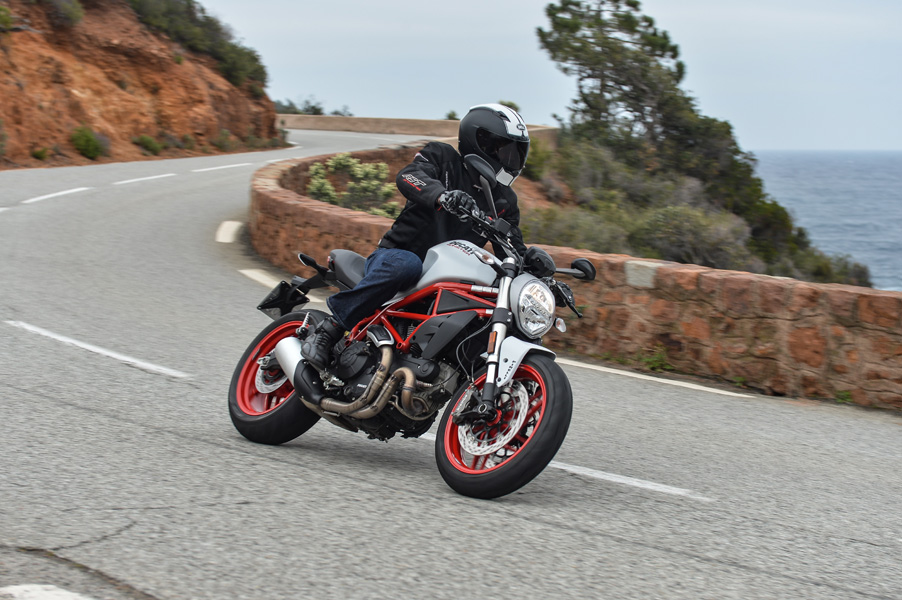
What is unmistakeable, however, is that the essence of a Ducati is present in spades. It is definitely a Monster; the family resemblance is there – not difficult when the fuel tank is shared with the Monster 1200 – and the trellis frame has returned to being full-length and has lost the bolt-on cast aluminium section that formed the seat support in a few previous models. It might not be possible to call it beautiful but it is distinctive; in fact, legend has it that when a Ducati insider saw the first prototype bike, he declared it to be a bit of a monster, in terms of its looks, and the name quickly stuck as a nickname if not as a full model name at first.
Time has been kind to the Monster, however, and we now accept it as a classic piece of motorcycle design; at once distinctive and aggressive, yet somehow friendly and promising fun at the same time.
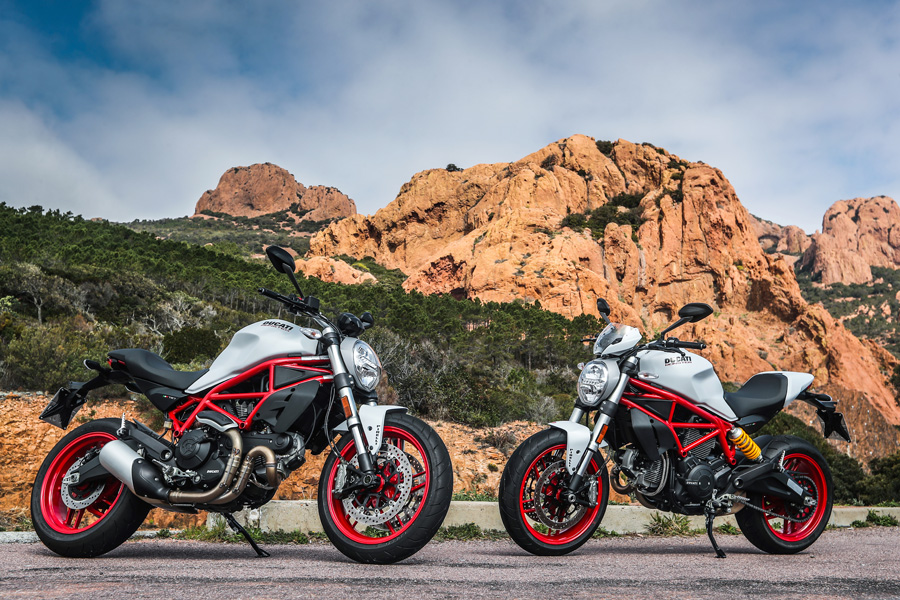
How long can Ducati make an air-cooled motor conform to emission regulations that get stricter with every re-draft? Stefano Tarabusi, Product Manager at Ducati, admits that it is getting harder but, for now, the engine complies. The biggest problem is one of noise emission; not from the exhaust but from the engine itself. You might not think it but the cooling fins on an air-cooled engine do make quite a lot of noise when they vibrate. Personally, I think the noise from an air-cooled Ducati motor to be one of the best sounds in motorcycling but, apparently, the bureaucrats in Brussels aren’t fans of noise of any sort, save perhaps for the sound of their own voices.
It could be argued that Ducati have created a problem for themselves with the Monster 797. It retails for the same price as a Scrambler Icon – the base model of the 800cc Scrambler range – and yet you get looks that are iconic within motorcycle design language and not merely a pastiche of something that is perceived to be old.
Ducati maintain that the two bikes are not only aimed at different buyers but will not take sales away from each other. Only time will tell but, for now, if I was presented with one of each and told to choose one, the Monster would win the day.




